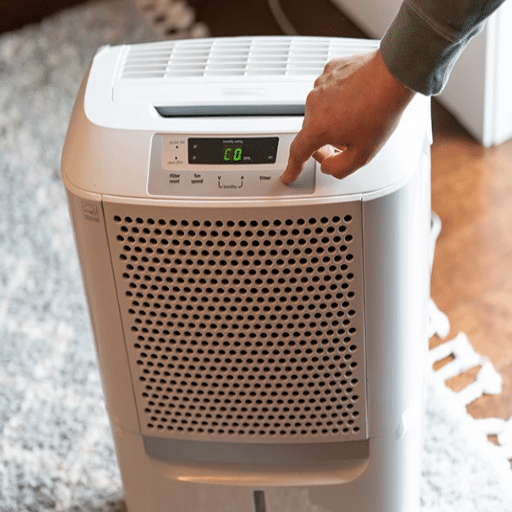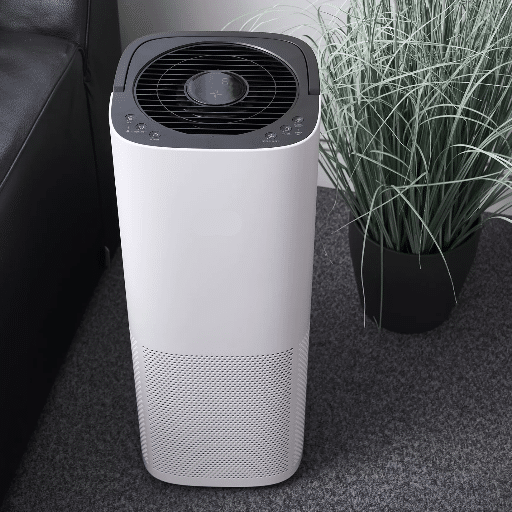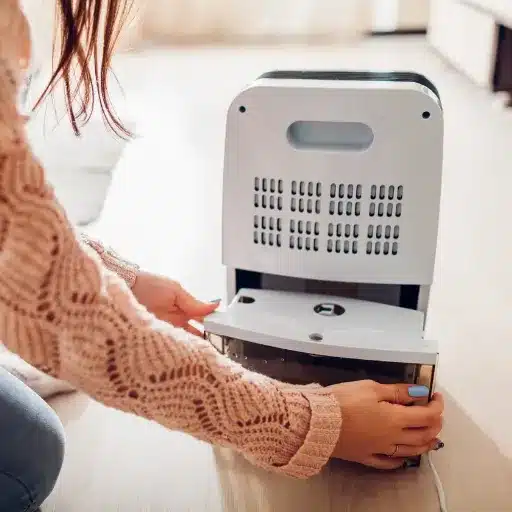When it comes to controlling humidity levels effectively, desiccant dehumidifiers stand out as a powerful solution for a variety of applications. Whether you’re dealing with excess moisture in industrial spaces, preserving delicate materials, or ensuring comfort in your home, choosing the right dehumidifier can make all the difference. But with so many options available, where do you begin? This guide is here to simplify your decision-making process. We’ll walk you through the essential factors to consider, the benefits of desiccant technology, and the key features to look for. By the end, you’ll have a clear understanding of how to select a desiccant dehumidifier that perfectly fits your needs, saving you time and ensuring optimal performance.
What is a Desiccant Dehumidifier and How Does it Work?
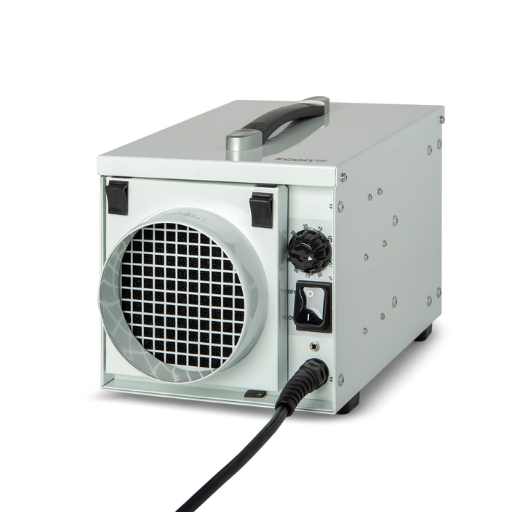
A desiccant dehumidifier is a device designed to remove moisture from the air using a desiccant material, which is a substance that naturally absorbs and retains water. Unlike standard refrigerant dehumidifiers, desiccant models do not rely on cooling to extract moisture. Instead, air passes through the desiccant material, where humidity is absorbed. The device then dries the desiccant, releasing the collected moisture as vapor, typically through a heated air exhaust. This type of dehumidifier is particularly effective in low-temperature environments and spaces with high humidity, making it ideal for basements, industrial settings, or colder climates.
Understanding the Desiccant Technology
Desiccant dehumidifiers offer distinct advantages over conventional refrigerant-based models, particularly in specific conditions. One of the key benefits is their efficiency in extracting moisture in environments with temperatures below 41°F (5°C). Unlike refrigerant dehumidifiers, which rely on condensation forming on cold coils, desiccant units remain effective in colder settings by leveraging moisture-absorbing materials such as silica gel. Studies indicate that these systems can reduce relative humidity by 40-60%, even in challenging environments.
Another advantage is their portability and lighter weight when compared to refrigerant-based models. Many desiccant units are compact and easy to transport, making them well-suited for applications such as temporary construction sites, flood restoration projects, and high-humidity storage spaces like wine cellars or archives.
Furthermore, desiccant dehumidifiers tend to operate more quietly due to the absence of compressors, making them a preferred choice for noise-sensitive environments such as museums, libraries, or residential use at night. This technology also contributes to better air quality by minimizing mold growth and corrosion risks in damp spaces.
Innovative advancements in materials and energy efficiency have further refined the performance of desiccant dehumidifiers. Modern models incorporate energy recovery systems to reduce heat loss during operation, making them more sustainable and cost-effective over time. These improvements demonstrate the versatility and reliability of desiccant technology for a wide range of applications.
How Silica Gel Helps in Moisture Removal
Silica gel is highly effective in moisture removal due to its ability to absorb and retain water vapor from the surrounding air. It contains tiny pores that trap moisture while keeping the environment around it dry. This makes silica gel particularly useful in protecting sensitive items like electronics, pharmaceuticals, and food products from damage caused by humidity. Additionally, it is non-toxic, reusable, and easy to regenerate by heating, making it a practical and reliable solution for moisture control.
Comparing with Compressor Dehumidifiers
When it comes to managing humidity, silica gel and compressor dehumidifiers serve different purposes, catering to distinct needs. Compressor dehumidifiers are mechanical devices designed to extract moisture from the air in larger areas, typically using a refrigeration system. Unlike silica gel, which passively absorbs moisture, compressor dehumidifiers actively draw air into the system, cool it to condense water vapor, and then release the dehumidified air back into the space.
Compressor dehumidifiers have considerable advantages for high-capacity applications. For instance, many modern units can remove between 20 to 50 pints of water daily, making them suitable for humid climates or damp rooms such as basements. By contrast, silica gel is ideal for small, enclosed areas like storage containers or safes. Furthermore, compressor dehumidifiers can regulate humidity levels to specific percentages, providing a tailored solution for spaces requiring precise moisture control, such as museums or laboratories.
However, compressor dehumidifiers have notable downsides compared to silica gel. They consume significant electrical energy—an average dehumidifier uses approximately 300–700 watts depending on its capacity. Additionally, maintenance is required, as the water collection tank must be emptied regularly, and the unit’s filters cleaned. Silica gel, on the other hand, is energy-free and reusable after simple regeneration, making it an environmentally friendly, cost-effective option for targeted dehumidification.
Ultimately, the choice between silica gel and compressor dehumidifiers depends on the scale, efficiency needs, and practicality of the application. While compressor dehumidifiers excel in covering expansive areas with active dehumidification, silica gel stands out for its portability, low maintenance, and versatility in smaller-scale or delicate setups.
How to Choose the Best Desiccant Dehumidifier for Your Needs?
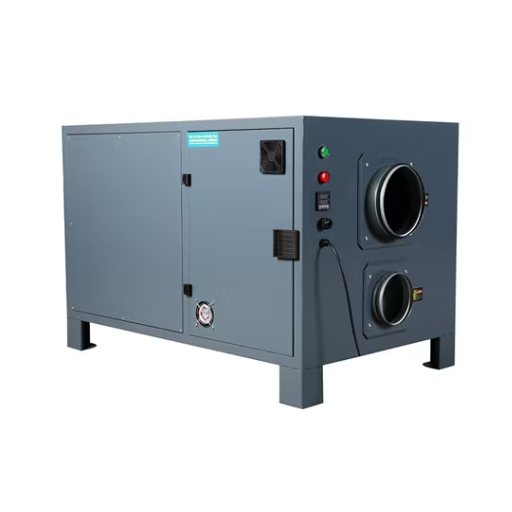
To select the ideal desiccant dehumidifier, start by assessing the size of the area you need to dehumidify. For smaller rooms or spaces with low to moderate humidity, a compact, portable model will suffice. Next, determine the moisture level you need to control—desiccant dehumidifiers excel in colder environments and can operate effectively at low temperatures. Consider factors such as energy efficiency, noise levels, and ease of maintenance to ensure a practical choice for your space. Finally, check the device’s capacity and ensure it meets your specific humidity control requirements.
Factors to Consider: Size and Compact Design
The dehumidifier’s performance and effectiveness are determined by its size, so compact design is particularly impactful. Consider the following details:
Measurements: Measuring the space designated for the dehumidifier is critical. Smaller models are better suited for compact rooms or apartments. Some designed are more versatile and can be placed in corners and under furniture.
Weight: Dehumidifiers that can easily be taken from room to room using wheels or handles are much more convenient. These are particularly useful for people who live in multi-story houses and want to use the device throughout.
Water Tank Size: These are often smaller in portable devices, compact water tanks holding 0.5 to 2 liters are easier to handling and lighter to carry.
Performance vs Dimension: Many smaller models are advertised as “compact,” do check the specifications as these units often encompass large footage. Check guidelines to ensure the selected device matches appropriate coverage if high performance is expected.
Small Unit Efficiency: Compact dehumidifiers, for example, are small energy consumers, making them cost-effective for smaller spaces. To ensure efficiency, check for Energy Star certification on the model.
Appealing Design: Compact units often come in sleek and modern designs that can blend seamlessly with home décor, removing the bulky or industrial look associated with larger units.
Considering these factors will make it easier to choose a dehumidifier that meets your needs in terms of size, design, and functionality.
Decoding Specifications: Pint Capacity and Efficiency
When evaluating dehumidifiers, pint capacity is a core specification that determines how much moisture a unit can remove from the air within 24 hours. This capacity is often matched to the size of the space and the humidity level of the environment. For example, a 30-pint dehumidifier is typically suitable for smaller spaces, such as bedrooms or bathrooms, experiencing moderate moisture levels, while a 50- or 70-pint unit is better for larger areas like basements or living rooms with high humidity.
Efficiency is equally significant, as modern dehumidifiers are designed to balance power consumption and performance. Look for units with an Energy Star certification, which ensures they consume less energy while delivering reliable moisture control. For instance, Energy Star-certified dehumidifiers use 15% less energy on average compared to conventional models, saving you money on electricity bills. Additionally, features such as adjustable humidistat settings, auto-shutoff, and low-temperature operation enhance both efficiency and ease of use.
To make an informed choice, consider the unit’s specifications alongside your room size and typical humidity levels. By selecting a dehumidifier with the right pint capacity and energy-efficient technology, you can effectively create a healthier and more comfortable living environment.
Understanding Humidity Control Features
When it comes to understanding humidity control features, I prioritize finding options that make maintaining optimal air quality both straightforward and efficient. I look for adjustable humidistat settings, as they allow me to set and maintain my preferred humidity level with precision. Features like auto-shutoff add convenience by ensuring the unit turns off once the desired moisture level is achieved, while low-temperature operation is ideal for continued use in cooler conditions without compromising performance. These functionalities give me confidence in creating a comfortable and healthier living space effortlessly.
How to Maintain and Care for Your Desiccant Dehumidifier?
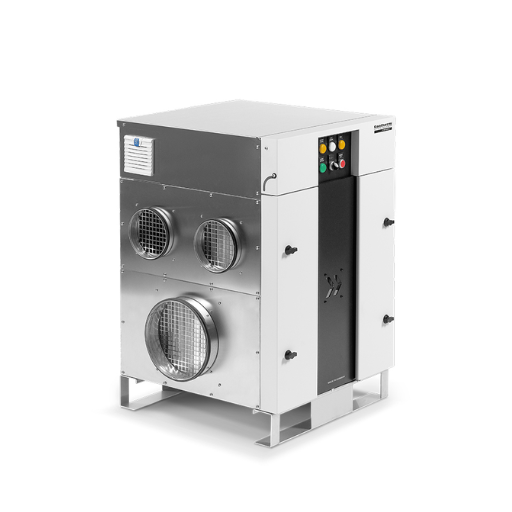
Clean the Filters Regularly
Check and clean the filters at least once a month to ensure optimal performance. Dirty filters can restrict airflow and reduce efficiency.
Empty the Water Tank Frequently
Empty the water tank as soon as it reaches capacity to prevent overflow and maintain proper operation.
Wipe the Exterior
Use a soft, damp cloth to clean the surface of the dehumidifier, removing dust and debris.
Inspect for Wear and Tear
Periodically examine the power cord, tank, and other components for signs of damage. Replace parts if necessary.
Store Properly When Not in Use
When storing the unit, ensure it is clean, dry, and kept in a cool, dry location to prevent mold or damage.
Regular Cleaning and Drying
A dehumidifier that employs desiccant materials requires careful cleaning and drying to perform optimally. To begin, ensure you are regularly emptying the water tank or at least daily, considering the water tank fills to the optimum height. Stagnant water is a recipe for bacterial infestation and produce foul smelling odors. You should clean the water tank with warm soapy water at minimum once week in order to get rid of residue. This reduces hygiene problems and stops unwanted contaminants from being discarded into the air.
Air filters also require regular cleaning. Depending on activity, filters can be cleaned or replaced every two weeks. For maximum airflow, dehumidifiers should be set to the proper airflow to increase efficiency. Filters which are not cleaned can hinder the unit’s ability to function as well as encourage the unit to use more energy. Most manufacturers suggest rinsing washable filters under gentle streams of water and completely drying them before replacing them.
For a machine with a desiccant component, sustaining an environment of high humidity for long periods can deteriorate its moisture absorption capabilities. Check the product manual for instructions or regeneration and replacement. Some models can self-regenerate with the use of heat, while others require the handbook instructions for manual replacement of the desiccant. Washing and dusting the heating element used for regeneration is a must, it needs to be clean of any dust accumulation.
Finally, maintaining the cleanliness of the unit’s exterior and the surrounding area is important. Cleaning the outer casing with a soft, damp cloth on a weekly basis will prevent dust and dirt build-up that could obstruct the device’s vents and affect its performance. Following these proper cleaning and drying procedures will help sustain the condition of your desiccant dehumidifier while improving the air quality indoors.
Managing the Water Tank and Drain Options
The proper management of a dehumidifier’s water tank enhances its efficiency and reduces the needed supervision. Most models feature a removable water tank designed to capture moisture from the air. Depending on the model of the dehumidifier, tanks can usually hold anywhere between 1 to 7 liters of water. For example, a model with a 10-liter tank may require the tank to be emptied every 8 to 12 hours in high humidity settings. Smaller models will need more frequent attention.
To alleviate the need to frequently empty the water tank, many desiccant dehumidifiers offer the option for continuous drainage of the tank. This feature allows users to attach a hose directly to the unit for routing excess water to a sink, drain, or other designated place. These models are especially useful in areas like basements which have high levels of moisture because they eliminate the need to empty the tank multiple times.
Some models are equipped with advanced options, such as built-in pumps, which can automatically push the water to higher drains (sinks or sometimes windows). This is useful for areas that don’t have floor drains. Users should also make certain that the hose is properly connected, placed and does not risk blocked or leaking while using these functions.
Proper maintenance of the tank and the entire drainage hose is crucial for hygiene and effective operation. Improper maintenance of the water tanks may, over time, cause the build-up of mold or bacteria which would significantly impact the air quality and the performance of the dehumidifier. To mitigate this risk, the tank needs to be rinsed once a week with warm soapy water and the drain hose checked for residues and clogs. With a little effort on managing your water tank and drain options, dehumidification can be easy and tailored to individual needs.
Troubleshooting Humidity Level Issues
Addressing humidity level inconsistencies in your space requires a systematic approach to identify and resolve potential underlying issues. First, ensure that your dehumidifier is appropriately sized for the room. A small-capacity unit may struggle to control high humidity levels in large spaces, while an oversized unit could cycle on and off too quickly, leading to inefficiency. For example, an area of up to 500 square feet typically requires a 30-pint capacity dehumidifier, while larger spaces, such as basements over 1,000 square feet, may need a 50- to 70-pint capacity unit to function effectively.
Next, examine the placement of your dehumidifier. Position it centrally and away from walls or obstructions to allow proper air circulation. Poor placement can drastically reduce the device’s efficiency, leaving pockets of high humidity. Regularly check the unit’s filter and clean it to prevent clogs, as dirty filters can impede airflow and lower performance.
Another factor to consider is ambient temperature. Dehumidifiers are often designed to operate optimally within specific temperature ranges. If the room is consistently too cold (below 41°F or 5°C), frost may form on the coils, impacting performance. Opting for a dehumidifier with a built-in defrost system can mitigate this issue in cooler environments.
Additionally, inspect seals, windows, and vents in the affected area. Gaps or leaks in insulation may allow external moisture to infiltrate, making it harder to maintain desired humidity levels. Seal any drafts or gaps and integrate weather-stripping for added control.
Finally, monitor your humidity levels with a digital hygrometer for accuracy. Ideally, indoor humidity should range between 30-50%. If levels remain inconsistent despite these efforts, the issue may stem from extreme environmental conditions or an aging dehumidifier. Investing in a newer, energy-efficient model might provide more consistent results while reducing electricity consumption. Regular maintenance and these troubleshooting strategies can help ensure your dehumidifier performs optimally in managing humidity levels indoors.
What are the Benefits of Using a Desiccant Dehumidifier?
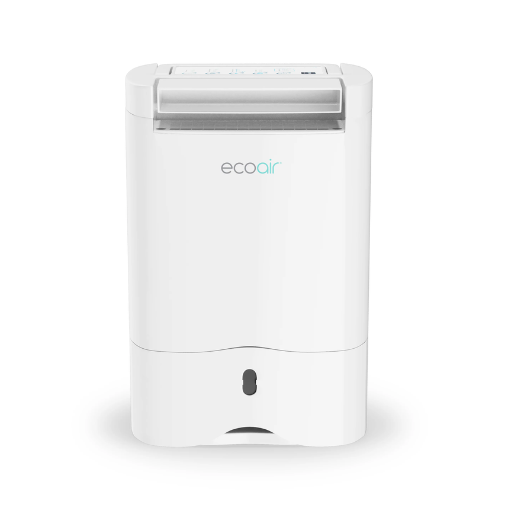
Desiccant dehumidifiers offer several practical advantages, making them a reliable choice for controlling humidity:
- Effective in Low Temperatures: Unlike other types, they perform efficiently in colder environments, ideal for basements or unheated spaces.
- Quiet Operation: With fewer moving parts, they typically operate more quietly, making them suitable for bedrooms or offices.
- Lightweight and Portable: Their compact and lightweight design allows for easy transportation and installation.
- Mold and Mildew Prevention: They efficiently reduce moisture levels, helping to prevent mold and mildew growth in damp areas.
These benefits make desiccant dehumidifiers a versatile and dependable solution for maintaining healthy indoor air quality.
Effective Moisture and Humidity Control
When it comes to effective moisture and humidity control, I rely on desiccant dehumidifiers due to their efficiency and versatility. They work exceptionally well in low-temperature environments, operate quietly, and help maintain healthy air quality by preventing mold and mildew. Their lightweight, portable design allows me to easily use them in different spaces, ensuring optimal humidity levels throughout my home.
Advantages Over Conventional Dehumidifiers
Efficiency in Low Temperatures
Desiccant dehumidifiers outperform conventional compressor-based dehumidifiers in colder environments. While traditional models often struggle to extract moisture effectively under 65°F (18°C), desiccant dehumidifiers remain highly efficient even in temperatures as low as 32°F (0°C).
Quieter Operation
Unlike conventional dehumidifiers that rely on a noisy compressor, desiccant models use a quieter mechanism, making them suitable for bedrooms, offices, and other noise-sensitive areas without causing disturbance.
Prevention of Mold and Mildew
By efficiently reducing humidity levels, desiccant dehumidifiers prevent the growth of mold and mildew. This not only preserves the integrity of furniture and walls but also contributes to healthier indoor air quality.
Lightweight and Portable Design
Unlike bulky traditional dehumidifiers, desiccant dehumidifiers tend to be smaller and lighter. This makes them easy to move between rooms or different locations as needed, providing flexible control over humidity levels.
Energy Efficiency in Targeted Use
Desiccant dehumidifiers are particularly energy efficient when used in smaller, specific spaces, as they require less electricity to maintain optimal performance in lower temperatures compared to their conventional counterparts.
Odor Reduction
Many desiccant models come with built-in odor control features. They not only remove excess moisture but also help eliminate unpleasant smells often associated with damp spaces.
Faster Dehumidification Process
Desiccant dehumidifiers often work quicker to remove moisture from the air, making them ideal for spaces where immediate humidity control is required, such as after minor water leaks or in areas prone to condensation.
By offering these advantages over traditional dehumidifiers, desiccant models provide a comprehensive and dynamic solution for maintaining optimal indoor environments.
Benefits of Portable and Compact Units
Portable and compact dehumidifiers bring unmatched convenience and versatility, making them an excellent choice for a variety of environments. Their smaller size and lightweight design allow users to effortlessly move the units from one room to another, ensuring targeted humidity control wherever needed. These models are perfect for apartments, offices, and even RVs, where space is limited and ease of use is essential.
Additionally, technological advancements have made portable units more efficient than ever. Many modern models include built-in energy-saving features, such as low wattage consumption, while still delivering powerful results. According to recent industry data, portable dehumidifiers can effectively maintain humidity levels at an optimal range of 30-50%, significantly reducing the risk of mold growth and improving indoor air quality within just a few hours of operation.
Portable and compact units often incorporate user-friendly features, such as digital control panels, programmable timers, and quiet operation. These enhancements make them particularly desirable for bedrooms or living spaces where noise and convenience are key concerns. With their ability to combine performance with mobility, portable dehumidifiers are a smart and dynamic solution for modern living.
Where Can You Use a Desiccant Dehumidifier?
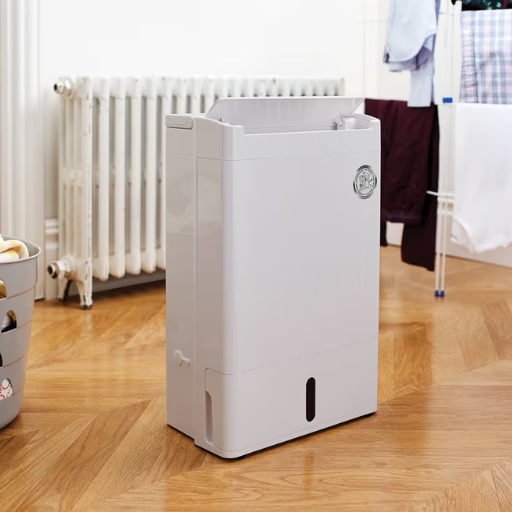
Desiccant dehumidifiers are highly effective in spaces where traditional compressor-based units may struggle. They work exceptionally well in cold environments, such as basements, garages, or unheated storage areas, as they are less affected by low temperatures. Additionally, they are ideal for controlling humidity in caravans, boats, or other compact spaces that are prone to excess moisture and condensation. Their lightweight and versatile design make them a practical choice for reducing humidity in a variety of challenging settings.
Ideal for Gun Safe and Garage Environments
Using a dehumidifier in gun safes and garages is essential to protect valuable items and maintain a stable environment. Gun safes, which often house delicate firearms and ammunition, are highly susceptible to rust, corrosion, and moisture damage when exposed to high humidity. Studies indicate that maintaining a relative humidity level between 30-50% is ideal for preventing these issues while preserving metal and wood components. By efficiently absorbing excess moisture, a dehumidifier ensures your firearms remain in excellent condition for years to come.
Similarly, garages are prone to fluctuating temperatures and damp conditions, especially during seasonal transitions. The buildup of moisture can harm stored tools, automotive parts, and other sensitive materials, leading to rust or mildew. High-capacity dehumidifiers designed for large spaces can reduce humidity levels, offering protection even in humid climates. Data shows that garages with controlled humidity have a significantly lower risk of tool degradation and material warping, extending the lifespan of your equipment. Incorporating a reliable dehumidifier into these environments creates a secure and optimal space for both firearms and tools.
Applications in RV and Camper Situations
Managing humidity in RVs and campers is a critical aspect of maintaining comfort and preventing damage to the interior over time. These mobile spaces are prone to condensation and elevated humidity levels due to their compact design and limited ventilation, particularly in humid or rainy environments. Excess moisture can lead to mold and mildew growth, create unpleasant odors, and even weaken structural materials.
Recent studies indicate that small, portable dehumidifiers rated for tight spaces can reduce moisture levels by up to 50%, significantly lowering the risk of airborne allergens and protecting interior furnishings. Many modern dehumidifiers offer energy-efficient operation, compact designs, and whisper-quiet functionality, making them ideal for the confined settings of RVs and campers. Additionally, travel-specific models often include user-friendly features like rechargeable systems and spill-proof reservoirs, adding convenience for individuals on the move. By investing in the right dehumidification solution, RV and camper owners can maintain a comfortable, damage-free environment, regardless of external weather conditions.
Using in Commercial and Home Settings
Dehumidifiers can be used for both home and commercial purposes. They also help reduce allergies, ensure good air quality, and minimize mold growth. Maintaining indoor humidity levels between 30-50% significantly decreases the presence of dust mites and other allergens known to induce asthma and other respiratory issues. Newer energy-efficient models for homes come with smart technology, allowing for remote control, thus improving convenience and energy savings.
Industries such as food storage, manufacturing, and pharmaceuticals require controlling humidity in a certain range, and dehumidifiers help maintain this level. They are also useful for maintaining a relative humidity level in storage facilities preventing spoilage of goods and rusting of machines. Advanced industrial dehumidifiers have automated moisture controls and robust filtration systems to help manage larger areas and harsher conditions. Recent reports in the market have indicated that dehumidifiers are globally in demand and their market is expected to grow steadily. This trend is attributed to the rising awareness of the quality of air indoors and the increasing number of climate-controlled facilities. This further showcases the importance of dehumidifiers as protective measures for optimal conditions in various settings.
Reference Sources
Here are two recent studies on desiccant dehumidifiers:
-
Experimental Investigation of Liquid Desiccant-Based Indirect Evaporative Cooler (2023)2:
- Key Findings: This study explored a hybrid cooling system combining liquid desiccant dehumidification with indirect evaporative cooling. The system achieved a 19.2% improvement in dew point effectiveness while maintaining dehumidification efficiency. It demonstrated potential as a standalone air-conditioning system or a pre-conditioner for conventional systems.
- Methodology: The researchers conducted experimental tests on a modified M-cycle cooling system, analyzing parameters like air velocity, bypass openings, and liquid desiccant flow length. Performance metrics included dew point and dehumidification effectiveness.
-
Impact of Desiccant Dehumidification on Classroom Humidity Levels (2023)1:
- Key Findings: This study evaluated the effectiveness of desiccant dehumidifiers in maintaining optimal indoor air quality (IAQ) in classrooms. It highlighted the role of desiccant systems in reducing humidity levels and improving comfort, especially in high-humidity environments.
- Methodology: The research involved real-world testing of desiccant dehumidifiers in classroom settings, focusing on humidity control, energy efficiency, and operational costs.
Frequently Asked Questions (FAQs)
Q: What is a desiccant dehumidifier and how does it work?
A: A desiccant dehumidifier uses a desiccant wheel to absorb moisture from the air. Unlike traditional dehumidifiers, it does not rely on condensation, making it effective in colder temperatures. The wheel is exposed to humid air, where the desiccant material adsorbs the moisture, then dry air is released back into the environment.
Q: How do I choose between a desiccant dehumidifier and a commercial dehumidifier?
A: The choice depends on your specific needs. Desiccant dehumidifiers are ideal for colder environments and smaller spaces, while commercial dehumidifiers are suited for larger areas and heavy-duty applications, such as handling water damage.
Q: Can I use a desiccant dehumidifier for home use?
A: Yes, desiccant dehumidifiers are simple to use and effective for home use, especially in areas prone to musty odors and excess moisture. They are also useful in maintaining comfort in spaces like basements and laundry rooms.
Q: What are the benefits of using silica gel desiccant in dehumidifiers?
A: Silica gel desiccant is highly effective at adsorbing moisture and preventing rust and musty odors. It is often found in small canister or packet forms, which can be used in various settings, including in small dehumidifiers for home use.
Q: Can I find rechargeable silica gel options for dehumidifying?
A: Yes, there are rechargeable silica gel options available, such as those from brands like eva-dry. These are convenient for long-term use as they can be reactivated by simply drying them out, making them a sustainable choice.
Q: What features should I look for in a dehumidifier for home use?
A: Look for features like a digital display for easy monitoring, continuous drain options, a built-in pump for automatic water removal, and auto shut-off to prevent overflow. Some models also offer a bucket for manual water removal.
Q: How do I maintain my desiccant dehumidifier?
A: Regular maintenance includes cleaning the air filters, ensuring the desiccant wheel is functioning properly, and checking for any blockages in the drain hose. For rechargeable models, reactivate the silica gel as needed.
Q: Are there eco-friendly options for desiccant dehumidifiers?
A: Yes, brands like ecor pro and sylvane offer energy-efficient models that are eco-friendly. These units often feature low power consumption and are designed to operate efficiently in various environments.
Q: What size dehumidifier do I need for a specific sq ft area?
A: The size of the dehumidifier you need depends on the sq ft area of the space. For example, a pint dehumidifier is suitable for small to medium-sized rooms, while larger spaces may require a more robust commercial dehumidifier with higher capacity.

